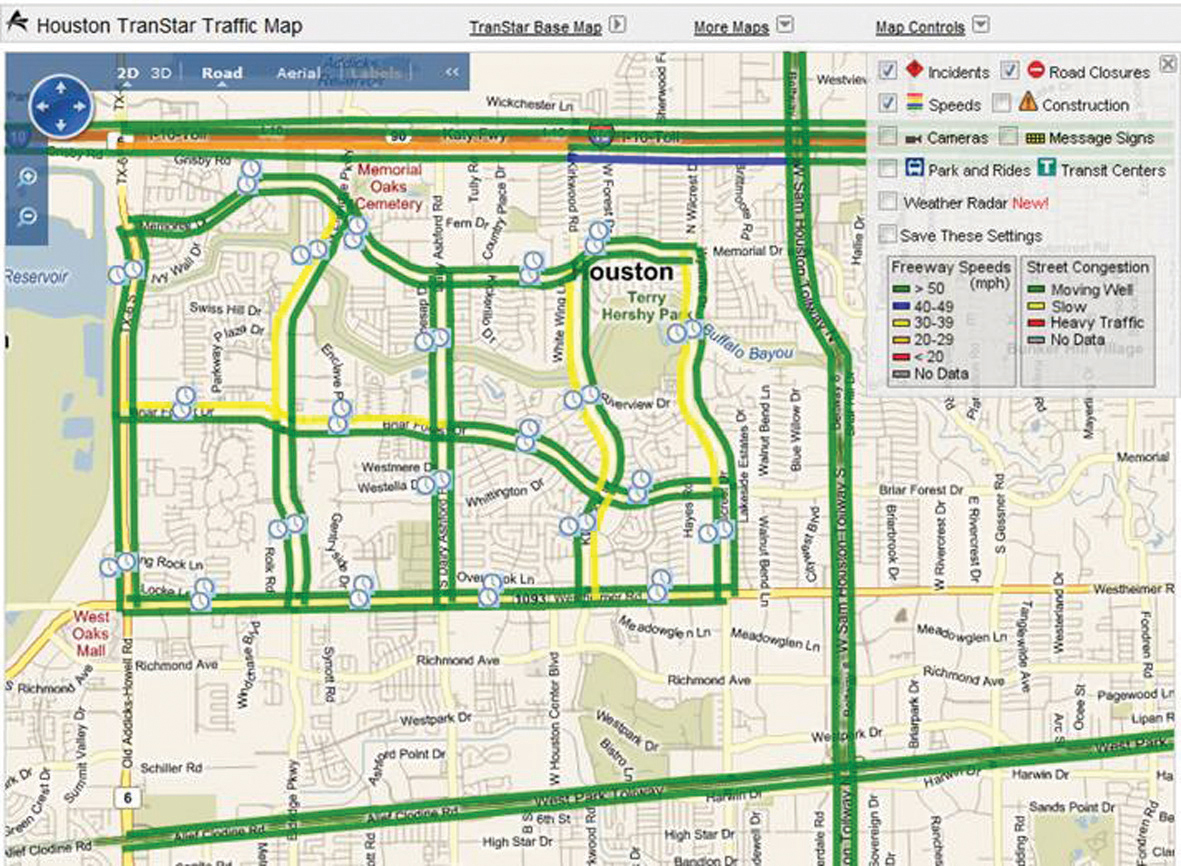
Hugh Colton, Georgia DOT details move to improve urban traffic control in the Atlanta area
With a significant proportion of traffic using freeways and toll-ways, along with a significant investment in roadway infrastructure, urban arterials are often the poor relation when it comes to ITS investment. Hitherto the primary means of Urban Traffic Control (UTC) has been the ubiquitous traffic signal. Many traffic signals still operate in a standalone mode and traffic detection is often broken, leaving the signal to rely upon a built-in time-of-day schedule. This schedule in turn relies upon a clock, and should that clock significantly slow down or speed up all semblance of intelligent operation is lost.
The poor performance of traffic signals has been the subject of several reports. A study carried out by the Oak Ridge National Laboratory in November 2004 for the
To date, attempts to improve the situation have been somewhat piecemeal. Solutions include replacing traffic signal controllers, installing CCTV cameras at strategic locations to monitor traffic, linking signals together using copper or fibre-optic cable, and connecting traffic signal controllers to dial-up modems, connecting traffic signals to traffic management centres. Only the final option in conjunction with an on-site CCTV system provides the possibility of proactive versus reactive traffic signal management.
Another factor that must be considered is the significant cost involved in operating and maintaining traffic signals. The burden of these costs falls entirely on the departments of transportation, whether they are local jurisdictions or the state DOTs. These costs are significant and as tax revenues fall, and operations costs rise, it is often the maintenance of traffic signals that suffers.
Users of the interstates and other urban limited-access highways are familiar with the websites associated with ITS that provide a visual indication of traffic speeds. Similarly, along urban freeways Dynamic Message Signs (DMS) provide travel times, as does the ever-expanding 511 service. Regrettably, there is no similar provision of traffic speeds or travel times for urban arterials. At best, websites and 511 systems may provide details of incidents that have occurred, and construction that may be taking place, but travel times for urban arterials are still unavailable.
Travel time developments
Efforts to address this long overdue need to better manage urban arterials, and the possibility of the provision of realistic travel times are beginning to bear fruit. Recently
The fidelity and accuracy of that data is still under review. Its availability does not address the overall poor operation of the nation's traffic signals. However, the data does provide a potential tool in the efforts to migrate from a largely reactive to a proactive stance in their management and operation.
Developments in Atlanta
In the Atlanta Metropolitan Area there has been a massive upgrade programme to traffic signal controllers, signal timing projects, signal maintenance programmes, traffic detection loop maintenance contracts, and upgrades to 700 intersections. These efforts, although providing a solid foundation, still did not lead to a seamless, operational system. With four Georgia DOT (
GDOT has taken the matter of traffic signal operation to a new level with its Regional Traffic Operations Program (RTOP). Backed by 100 per cent funding from the Federal Highway Administration (FHWA), 13 key urban arterial corridors have been identified for improvement. This in turn became the subject of a competitive selection process that resulted in a contract being awarded to Arcadis US Inc., whose team consists of consultants (URS, Wolverton and GeoStats), electrical contractors (World Fiber Technologies and RJ Haynie), system suppliers (
Along the arterial corridors, communications will be established using fibre-optic cables. CCTV cameras will be installed at strategic locations to aid in the proactive determination of non-recurring congestion. This will be augmented with travel speed detection. Initially speed detection will be achieved using the Bluetoad implementation of Bluetooth detection. In addition to field maintenance, the Arcadis team will be responsible for real-time monitoring of the arterial corridors, and the proactive adjustments to signal timing to improve travel times and manage non-recurring events such as incidents.
In addition to the need for responsive maintenance, a final solution to the methodology of how to cost-effectively determine arterial travel times has yet to be finally resolved. A number of technologies exist but most rely upon the installation of field equipment such as in-surface detectors, Bluetooth detectors, or Automatic License Plate Recognition (ALPR). Surface detectors require pucks to be inserted into the road surface along the corridor and data collection equipment to be installed and connected to the GDOT Ethernet network. Bluetooth detection relies upon the interception of the IDs of Bluetooth devices in vehicles at a number of locations along the corridor, and in so doing determines travel times, along with the provision of communications equipment connected to the GDOT Ethernet network. Both technologies will require ongoing operations and maintenance costs over and above the cost of traffic signal maintenance.
Solution longevity
The use of Bluetoad raises the interesting question of the longevity of Bluetooth as a data source. Bearing in mind the rapid development of communications technology and personal digital devices, Bluetooth could quickly go the way of many consumer products and disappear as rapidly as it appeared. ALPR is rarely used for travel time calculation alone, being more typically used for toll collection where a very high degree of positive vehicle detection accuracy is required.ALPR is costly and has been shown to cost three times more than the other two methods.
The availability of probe data was mentioned earlier. Now well established as a source of highly accurate travel speed data for freeways, probe data has yet to be fully proven as a reliable source of speed data for arterials due to the continual change of traffic speed as traffic stops and starts at traffic signals. It is probably only a matter of time before algorithms are developed that are capable of handling this phenomenon and probe data can be considered to be as accurate as that collected by field devices. The paramount advantage of probe data is that for DOTs no capital investment is required: no equipment has to be installed in the field and there are no on-going maintenance costs. Furthermore probe data can typically be turned on at very short notice (in just a matter of days, in fact). Operational costs are very reasonable and contract terms can be set whereby failure to provide data 99.5 per cent of the time would lead to penalties being incurred.
Another technology that for the moment is waiting in the wings is the electronic license plate. A number of countries and companies are currently looking into this technology and it could prove to be the ultimate solution to vehicle detection along any highway. As license plates have been with us for over 100 years, and are still the internationally recognised method to clearly identify an individual vehicle, its enhancement by the addition of some form of Radio Frequency Identification Device (RFID) cannot be far away. This technology would still require the deployment of field equipment, but would seem to address the possible short life of Bluetooth technology. Furthermore, it would monitor 100 per cent of vehicles as opposed to only those carrying a Bluetooth device.
Despite some reservations as to the efficacy of travel time determination on urban arterial corridors the RTOP project currently underway in the Atlanta Metropolitan Area will undoubtedly set an important benchmark in the coordinated operation of traffic signals. During the five years of this project's life it should be possible to establish a cost-effective methodology for the day-to-day operation of traffic signals in a way that provides the corridor users with a degree of reliability that has been clearly lacking in the past. Additionally this project will establish a proven methodology for DOTs to outsource the maintenance of traffic signals by providing an inbuilt performance monitor - that is, consistent travel times for the corridor users and payment to the contractor based on that performance.











